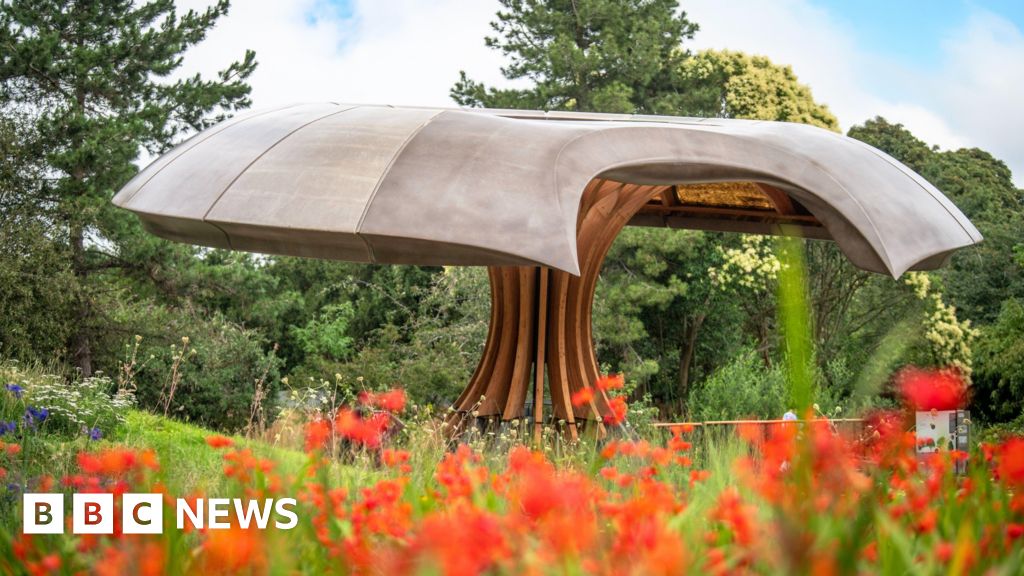On the northeastern tip of the Brazilian Amazon, houses teeter on the edge of huge chasms that suddenly opened up in the ground. The massive sinkholes put over a thousand people at risk of losing their homes, prompting the state government to declare an emergency.
Such sinkholes have appeared in cities in all around the world, including the US, Turkey and Iran. They can appear suddenly, posing threats to lives and homes.
What are sinkholes exactly?
Sinkholes are depressions in the ground formed when water erodes soil. This can happen naturally when rainfall trickles through the soil, dissolving underlying bedrock. But it can also be the result of leaky underground water pipes, fracking for fossil fuels and mining activity.
Sinkholes are more likely to occur in regions with "karst terrain" — areas made up of soluble bedrock such as limestone, salt beds, or gypsum — that can be dissolved by groundwater, said Hong Yang, environmental science professor with the UK's University of Reading. Yang has recently published research on mitigating sinkhole hazards intensified by climate change.
"In the United States, about 20% of the land is susceptible, with Florida, Texas, Alabama, Missouri, Kentucky, Tennessee and Pennsylvania experiencing the most significant damage," he told DW. Other hotspots include the UK, specifically areas like Ripon and the Yorkshire Dales in Northern England, Italy's Lazio region, Mexico's Yucatan Peninsula, parts of China, Iran and Turkey.
What role does climate change play?
Climate change is increasing the frequency of sinkholes by intensifying extreme weather events, according to research.
"Droughts lower the water table, removing subterranean support for the land above. When followed by intense storms or heavy rain — which are also becoming more common due to climate change — the sudden weight and saturation of water can cause the weakened ground to collapse," said Yang.
He pointed to Turkey's breadbasket, the Konya Plain in central Anatolia. It's a karst terrain where increasing drought means more sinkholes are now opening up in populated regions.
Before the 2000s, researchers in the area used to register one sinkhole every few years, said Fetullah Arik, a professor at Konya Technical University who heads the university's sinkhole research center. In 2024 alone, they documented 42.
 Sinkholes have been popping up much more frequently in Turkey's Konya Plain in recent yearsImage: Abdullah Coskun/Anadolu Agency/picture alliance
Sinkholes have been popping up much more frequently in Turkey's Konya Plain in recent yearsImage: Abdullah Coskun/Anadolu Agency/picture allianceGroundwater levels across the Konya basin have dropped by at least 60 meters (197 feet) compared to 1970.
"In some areas close to the basin edges, groundwater cannot be found, although wells deeper than 300 meters are drilled," he added.
Drought linked to climate change is lowering groundwater levels because rainfall is not replenishing water sources. But because people still need access to water, they are pumping lots of it, which in turn, exacerbates the risk of sinkholes. In populated areas, that also means buildings are more vulnerable to collapse.
"If you pull water out of a juice box too fast, the sides cave in," said Antonios E. Marsellos, associate professor of geology, environment, and sustainability at Hofstra University in New York State."That's like pumping too much groundwater, so the support of the underground weakens and may collapse just like the juice box that bent."
Marsellos, who published research on climate change effects on sinkhole formations,
says it's made worse in big cities with air pollution where water gets more acidic and breaks down rock faster.
Marsellos and his team looked at freeze-thaw cycles in Long Island, New York State, over a period of close to 80 years and found that increased temperatures due to climate change weakens the stability of the soil and has a direct impact on sinkhole formations.
Can we prevent them?
Experts rely on technologies such as satellite remote sensing and ground-penetrating radar to detect subtle ground subsidence and underground voids to spot sinkholes before they collapse, said Yang. Other detection methods include monitoring groundwater levels and conducting geotechnical surveys before building in the area.
 Sinkholes such as this one in Mexico's Puebla state can swallow large areas of landImage: José Castañares/AFP
Sinkholes such as this one in Mexico's Puebla state can swallow large areas of landImage: José Castañares/AFPIf an empty void is found underground, experts then act like a dentist, said Marsellos.
"It's exactly the same thing that we do — we check if there is any cavity, basically any empty space under the ground that eventually will not be able to hold that empty space."
Depending on local conditions such as the makeup of the rock and tectonic activity, the cavity could then be filled, with cement, for instance, he said.
In Turkey's Konya Basin region, where over 80% of the water consumed is used by agriculture, Akir says the most important factor is to regulate excessive groundwater use so the soil has that natural stabilizer underneath. Farmers have now switched to more efficient irrigation techniques.
The region has also tried out a number of water transfer projects, such as the Blue Tunnel project, which takes water from Göksu River to help fill the Konya Plain.
Other prevention strategies include controlling drainage and fixing leaks and enforcing strict building codes, Yang said. "Engineering solutions can stabilize the ground by injecting grout to fill voids, compacting loose soil, or using geogrid technology to reinforce the land."
Edited by: Jennifer Collins









 English (US) ·
English (US) ·